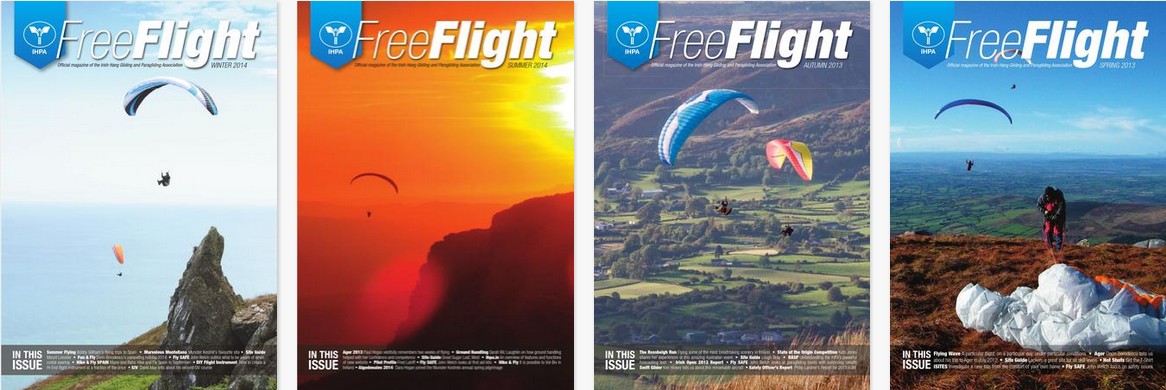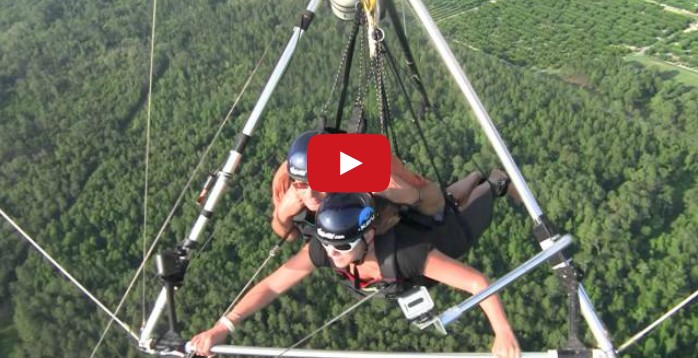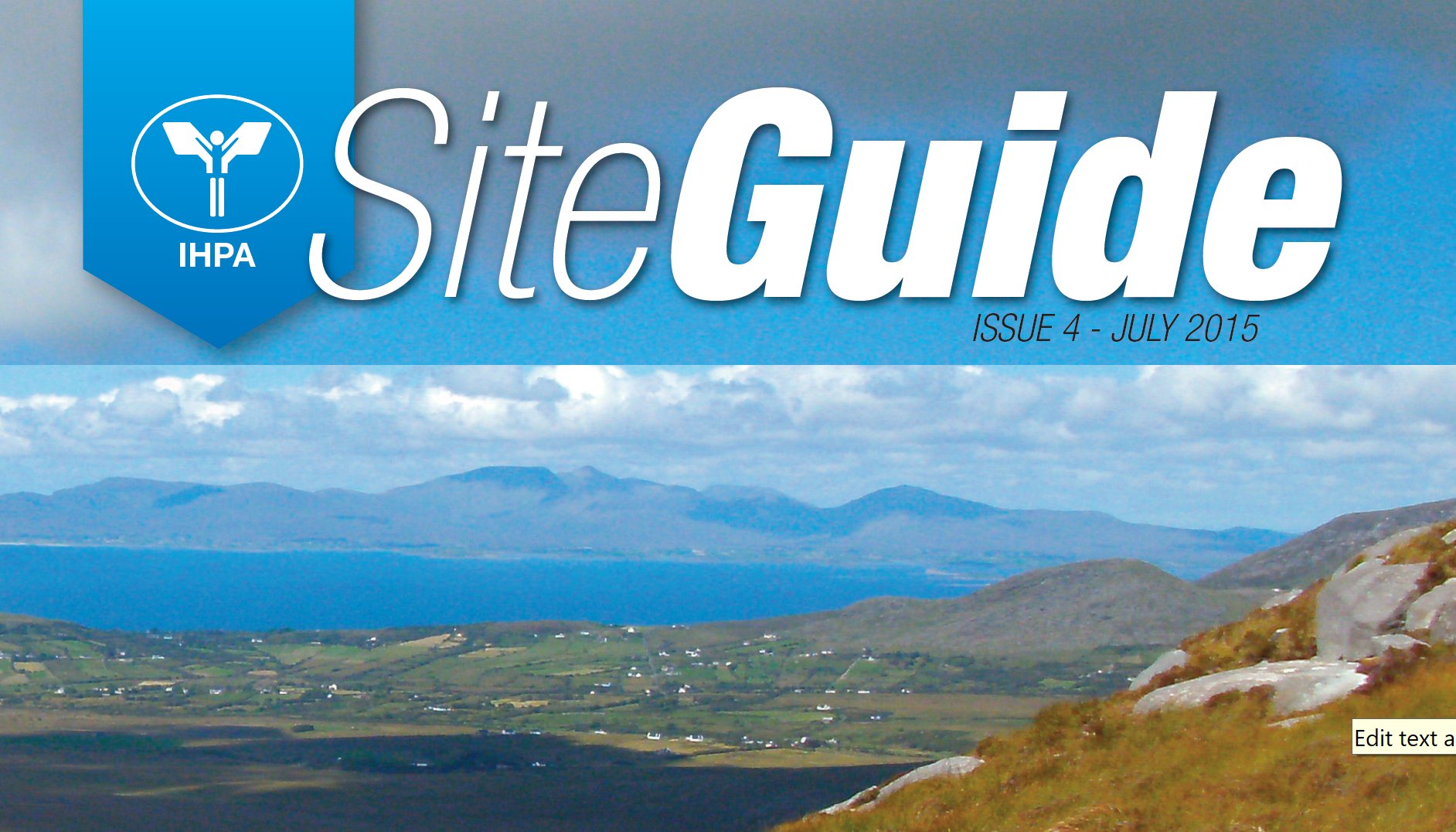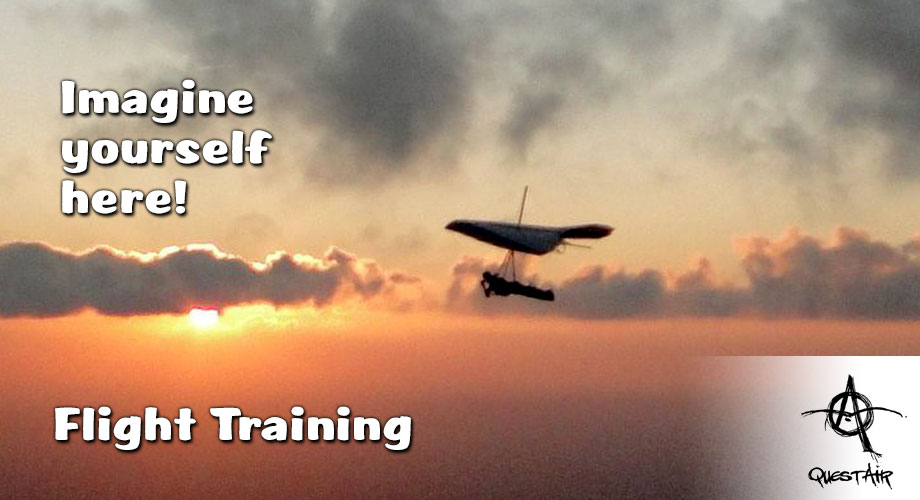The IHPA sets the dates for a number of weekend competitions throughout the year. Pilots compete against each other in flying an agreed task or to an agreed goal. Points are awarded at the end of each task depending on the performance of each pilot. These points are recorded by the IHPA Competitions Officer, and the pilot with the highest number of points at the end of the year wins the IHPA Competitions League Trophy. Hang Gliding and Paragliding competitions are scored separately and each has their own trophy. Pilots wishing to enter any competitions must be fully insured and paid up members of the IHPA, and must hold a pilot rating of Safe Pro 3 or Para Pro 3 or above. Student pilots are under no circumstances permitted to fly in competitions.
Safety
It is important to note that while the IHPA may set the dates and venues for the competitions, it is the responsibility of individual pilots to decide whether or not the weather conditions on the day are safe and suitable to compete in the agreed task. All pilots intending to compete in a competition will be required to sign a statement confirming that they understand this and assume personal responsibility for their own safety. The IHPA Competitions Officer or IHPA Training & Flight Safety Officer may suspend or cancel a task at any time for safety reasons or refuse entry to any pilot they believe is not qualified to compete safely.
Entry Fee
[NB: This may be amended by the comps officers each season!]
Each pilot entering a competition must pay a fee of €10 to the IHPA Competitions Officer. This fee is payable regardless of the number of tasks held over a competition weekend. Pilots entering the competition for just one day must pay the same entry fee. In a change from previous years, 50% of the entry fees will be paid out at the end of the competition weekend to the 1st, 2nd and 3rd ranking pilots, while the remaining 50% of the pot will be held over for an end of year prize awarded to the overall IHPA Competitions League winner at the IHPA AGM. This is to encourage as many pilots as possible to enter IHPA competitions and compete even if they know they have no chance of winning the League by attending all the competitions. The more pilots who enter, the larger the prizes!
Task Windows
It will be the group decision of all the pilots competing on the day to agree on a time frame that each task must be completed in. The IHPA Competitions Officer will record these start and end times on his Task Sheet. Pilots may launch at any time after the task has been agreed upon by all pilots and are free to fly as they please, but must return to the Start Cylinder once the Task Window opens, and must land before the Task Window closes or be able to show a GPS record of their position at those times. Points are awarded based on the distance made at the time the Task Window closes.
Take-off and Goal Cylinders
In the interests of safety, pilots may launch before the Task Window opens and fly as they please. However, competitors must return to the Start Cylinder once the window opens. The Start Cylinder is deemed to be a vertical cylinder centred over the take-off area with a radius of 1km or as jointly agreed by all the competing pilots. This is to prevent a sudden rush of pilots, all trying to take off and establish themselves as soon as the window opens. Similarly, the Task Goal is also defined as a vertical cylinder centred over a point, agreed by all the competitors, with a radius of 1km. Competitors are deemed to have reached Goal if they fly into any part of this cylinder and mark their position and time using a GPS. This is to facilitate a safe landing in an area with unknown terrain. Pilots may choose to continue flying if they wish and make as much use of the flying conditions on the day to achieve an even better Cross Country flight, which may be entered into the XC League. The IHPA Competitions Officer will record the agreed Start and Goal Cylinder details on his Task Sheet.
Waypoints
Any agreed task that consists of more than a simple race to goal must contain one or more agreed waypoints which pilots must fly over on their way to the goal. Waypoints are deemed to be a verticle cylinder with a radius of 50m centred over an agreed point on the ground. Pilots must produce an uninterrupted GPS track-log showing that they clearly entered the cylinder.
Waypoints arround Mt Leinster:
{mosmap kml='http://www.ihpa.ie/images/stories/ihpa/competitions/mt-leinster-pg-waypoints.kml'|mapType='Terrain'}
Pilots can download these waypoints HERE and use GPSdump to upload them to their instruments.
Cloud flying
Cloud flying is not permitted and will lead to disqualification.
Scoring (PG)
There are a maximum of 600 points available to each pilot for each task based on Distance flown, Time taken and Altitude gained:
- Distance: 325 points will be awarded to every pilot that reaches Goal. Pilots not making goal are awarded a percentage of the 325 points proportional to distance covered by achieving the furthest waypoint. For example, if a pilot flies 3/4 of the way he gets 325 multiplied by 3/4, or 244 points.
- Time: 175 points for the first to reach goal; second pilot in gets 150, and so on down in decreasing increments of 25. Time points are awarded only to pilots who reach goal.
- Altitude gained: 100 points for the biggest hight gained; second pilot gets 90 and so down in decreasing increments of 10.
- Additional points: additional 30 points for every pilot flying "Fun and Safety" class glider once he reaches the first waypoint, less 30 points for every pilot flying "Serial" class glider once he reaches first waypoint
- "Fun and Safety" class - gliders with up to LTF/DHV 1-2,CEN-B atest,
- "Serial" class - gliders with LTF/DHV 2-3, CEN-C atest.
Alternatively, if the comps officer is feeling brave, he may prefer to use the official FAI / CIVL Flight Scoring software package used in all CAT 1 and CAT 2 comps.
Gliders with no atest are not permitted.
Disagreement / Appeals regarding scoring
If the pilot is unhappy with the scoring he may lodge a written protest in English within 24 hours of the posting of results. The organiser will then elect an Appeal Committee of 3 people to take a decision on the issue.
Scoring (HG)
There are a maximum of 500 points available to each pilot for each task based on Distance flown and Time taken.
- Distance: 325 points will be awarded to every pilot that reaches Goal. Pilots not making goal are awarded a percentage of the 325 points proportional to distance covered. For example, if a pilot flies 3/4 of the way he gets 325 multiplied by 3/4, or 244 points.
- Time: 175 points for the first to reach goal; second pilot in gets 150, and so on down in decreasing increments of 25. Time points are awarded only to pilots who reach goal.
Alternatively, if the comps officer is feeling brave, he may prefer to use the official FAI / CIVL Flight Scoring software package used in all CAT 1 and CAT 2 comps.
Hang Glider Handicapping System for Flexies v Rigids:
Davis Staub (OzReport) has assembled a spreadsheet detailing a handicap system that allows rigid wings and flex wing gliders to compete on a more level playing field.
Click >>HERE<< to download the spreadsheet.
Score Keeping
The HG and PG Competitions Officer will use a Competition Task Sheet (click link to download) to record the names of competing pilots, the task, the weather, entry fees collected and the final scoring and prizes handed out.
Task Validation
A task may only be declared to be valid when one or more competing pilots fly a minimum of 25% of the task called.
Task will be cancelled if less than 5 pilots register (does not apply to hg pilots).
League Validation
A minimum of just one valid task must be successfully run over the course of the year in order to validate the league so that the end of year Competitions Trophy can be awarded to the overall winner.
Overall winner
Overall results will be determined as follows:
- If 7 tasks are achieved then the best 5 score.
- If 6 tasks are achieved then the best 4 score.
- If 5 or 4 tasks are achieved then the best 3 score.
- if 3 tasks are achieved then the best 2 score.
- If 2 or less tasks are achieved they all score.
Tracklogs
You can convert your GPS tracklogs with IGC2KML and view them directly in GoogleEarth.
Note: On competition weekends, it is proposed to call each venue a few days in advance, (say on the Wednesday evening), once a forecast has been obtained and either confirm or change the decision on the Friday evening, again subject to 9.25pm RTE1 weather forecast and other available information. Call the HG or PG Competitions Officers (see the Contacts page) to confirm. An SMS message confirming the venue will also be broadcast to all current members who have signed up to this service.
Hang gliders and paragliders participate in separate comps. All hang gliders will compete in the same comp, weighted based on the published glide ratio for each wing.
The Legal Bit: WITHOUT PREJUDICE. Pilots should note that all IHPA competitions are organised by volunteers and neither the association nor its officers shall be liable to pilots who participate in these competitions. All pilots enter at their own risk. Visiting pilots and non-members must have evidence of public liability insurance.







